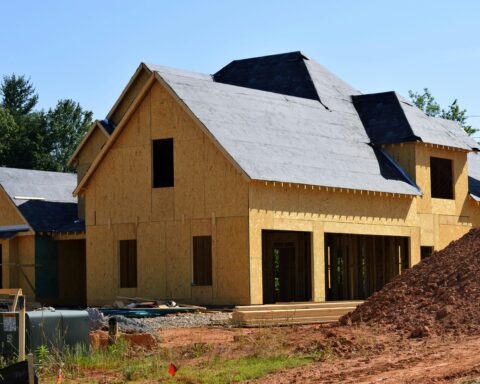The U.S. Department of Energy (DOE) will commit $104 million for energy conservation and clean energy projects at 31 federally owned facilities nationwide.
The funding comes from DOE’s Assisting Federal Facilities with Energy Conservation Technologies (AFFECT) program. The money is the first of three disbursements from a $250 million allocation for the program in the Infrastructure Investment and Jobs Act passed by Congress in 2021.
The AFFECT program, which was created in 1992 assists federal agencies to reduce energy consumption through building electrification, geothermal heat pumps, on-site solar generation, battery energy storage and other initiatives.
The projects are expected to double the amount of current on-site carbon-free electricity at federal facilities, resulting in 27 megawatts of additional energy, leverage more than $361 million in private investment at these sites and serve as a demonstration model for other federal agencies, according to a DOE statement.
In the first year of these projects, which are in 18 states, Washington, D.C., and Germany, the federal government expects to save more than $29 million in energy and water costs, remove the amount of greenhouse gas emissions produced by 23,042 gasoline-powered and reduce the annual electricity use by the equivalent of 29,662 homes.
The Social Security Administration (SSA) headquarters is set to receive the largest grant. The Baltimore-based federal agency will get $27 million to help it achieve near-zero or net-zero standards. A cost-effective feasibility study will be conducted to retrofit the SSA’s supply building’s HVAC system, switching from a conventional variable air volume hydronic system to a more efficient model.
If successful, the system could be applied to other campus buildings. Among the activities included in the study are drilling, engineering, cost estimation and developing net-zero best practices, with anticipated outcomes including an energy-efficient HVAC system that meets federal standards. Additionally, the study will explore integrating a 300-kilowatt solar photovoltaic system to make the SSA campus closer to near net-zero or net-zero emissions.
Washington State will get funding for two projects totaling $14 million.
At Naval Air Station Whidbey Island in Oak Harbor, Washington, steam distribution losses account for most of building energy. The base wants to eliminate its natural gas-fired steam plant and miles of distribution system and install electrified heating and cooling systems.
A portion of the funding will also be used to upgrade undersized electric feeders to enable Whidbey Island to electrify buildings on these feeders, target additional loads for immediate electrification and prepare the base for further electrification.
In addition, the Navy will reduce fossil-fuel dependence and greenhouse-gas emissions at the base by utilizing an energy savings performance contract and utility incentives totaling $4.35 million. As part of the project, solar photovoltaics, heat pumps, a microgrid, small-scale carbon capture, LED lights and lighting controls will be installed.
This project will reduce fossil fuel use by 60%, save 5.5 million kilograms of CO2 emissions, and eliminate over 66,000 MMBTU of natural gas wasted by steam distribution systems.
The utility grid that powers Whidbey Island is currently 35% renewable, and the state of Washington requires net-zero carbon emission by utilities by 2030. Each electrified facility at the base will be a net‐zero building in 2030 with no further action required by the Navy.
In Richland, Washington, the DOE will replace evaporator diesel-powered boilers with electric boilers in the waste treatment and immobilization plant at the agency’s Office of Environmental Management Hanford Site. The Hanford plant treats 56 million gallons of legacy tank waste stored in 158 of the 177 underground waste tanks across the site. Funds will be used to partially finance the addition of a new electric steam plant to supply steam for waste treatment processes.
This project has the potential to save DOE $15.6 million in fuel costs per year in full operations, saving $904 million in fuel costs over the life of the mission (at 2023 fuel prices with no escalation).
The DOE’s Grand Junction Field Support Center in Colorado will receive $9.1 million to incorporate sustainability initiatives and net-zero building requirements into mission operations. The center will renovate the newly purchased 61,000 square feet office for more than 240 employees. The funds will be used to support contracting energy engineers, construction experts and procurement specialists.
The project, which will be executed by the U.S. Army Corps of Engineers may incorporate energy conservation measures that include deep energy retrofits, building automation systems, geothermal heat pumps, electrification, on-site renewable energy, LED lighting and water conservation.
In addition, rooftop solar panels, a heat-recovery heat pump system and solar thermal panels will be installed at the Pentagon in Arlington, Virginia.
All news and information on this site is provided by the team at Strategic Partnerships, Inc. Check out this short 1-minute video that provides a quick overview of how we work with clients.













